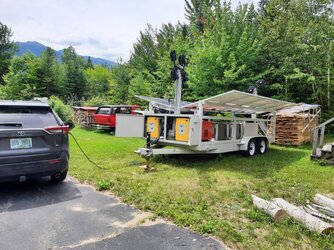Find me a renewable energy system that can heat my house cheaper than natural gas can, I will buy it right now.
Its going to depend on your local utility rates and solar incentives
For me here in Mass IF I could get gas it would be around $.92 per therm.
Tesla gives an estimate of $10,743 for a 7.2KW system after tax credits. The PVWatts calculator gives an estimated yearly output of 9,329kwh. From there you can do some simple calculations to get a rough cost per kwh over the systems life. From what I've read 20 years is a reasonable amount of time to keep a solar panel install. We have net metering so excess power I make in the summer gets me credits that I can use to cover my heating in winter.
9,329kwh * 20years = 186,580kwh
$10,743/186,580kwh = ~$.058/kwh.
I currently have a 4 ton Bosch central heat pump paired with a 97% efficient furnace (running off propane, but we'll say its gas)
1 therm is equal to 99976.1 BTUs and burned in my furnace that sends 96977 BTUs into my ductwork.
My heatpumps output and power requirements across multiple indoor and outdoor temperatures is documented. All of the following are assuming an internal air temp of 70f. The following is the BTUs per KWH the system can output at different outdoor temperatures.
@47f: 46,700btu / 3.63kwh = 12865 btu/kwh
@32f: 44,600btu / 4.59kwh = 9716 btu/kwh
@17f: 41,000btu / 5.02kwh = 8167 btu/kwh
@5f: 35,000btu / 4.93kwh = 7099 btu/kwh
Then the cost in electricity to match that 1 therm of gas.
@47f: 7.54kwh * $.058/kwh = $.43355
@32f: 9.98kwh * $.058/kwh= $.57385
@17f: 11.87kwh * $.058/kwh = $.682525
@5f: 13.66kwh * $.058/kwh = $.78545
Then keep in mind my central heatpump is not as efficient as some of the ductless minisplit systems out there. These costs could go down further if you were using some of the Hi2 ductless pumps from Mitsubishi (might get one for the finished room over my detached garage)


 I have actually upgraded to a 240 Volt EVSEsince then and upgraded the solar panel mounts, but this is a better picture.
I have actually upgraded to a 240 Volt EVSEsince then and upgraded the solar panel mounts, but this is a better picture.
